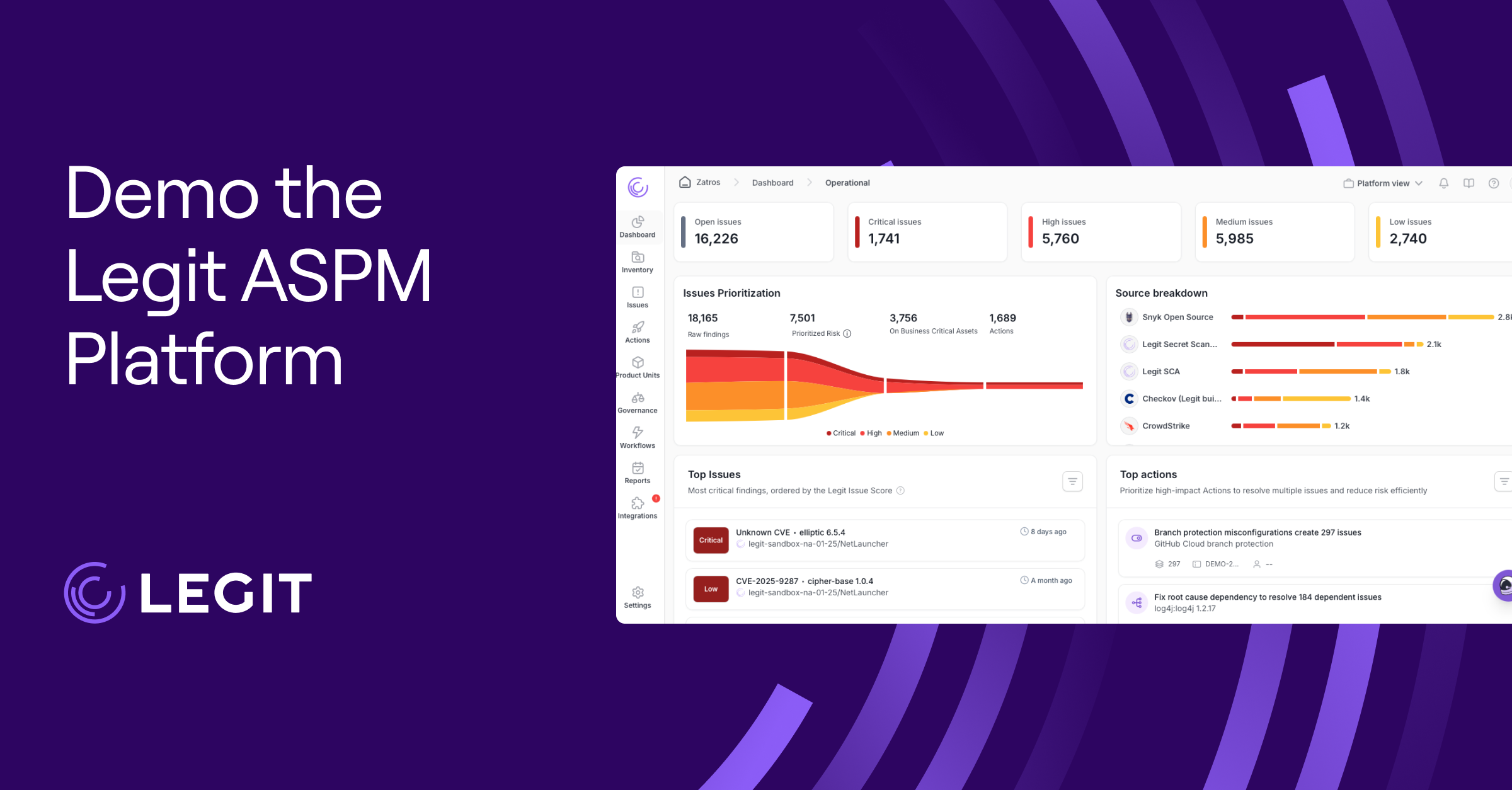Don’t wait for a cyberattack or breach to find out just how strong your security is. Develop an application security testing (AST) process to gauge defenses, protect software, and build trust with valued customers.
Here’s a guide to using AST to minimize security vulnerabilities and stay ahead of threats.
What Is Application Security Testing?
AST refers to the processes and tools that identify, analyze, and mitigate security vulnerabilities in software applications. It helps developers make their apps resilient against threats throughout the software lifecycle, from development to deployment. By uncovering weak points like insecure configurations, flawed code, or unprotected data flows, AST helps developers bolster security posture.
Web app security testing is a specialized subset of AST that safeguards web-based apps. Given their popularity and exposure to the Internet, this type of testing is vital for identifying issues like cross-site scripting (XSS), SQL injection, and authentication flaws.
Application Security Testing Approaches
Here are some broad AppSec testing approaches:
Black-Box Security Testing
Black-box security testing evaluates an application from an external attacker’s perspective without access to its internal workings. By simulating real-world attack scenarios, black-box testing focuses on inputs and outputs to identify vulnerabilities like injection flaws and authentication weaknesses.
White-Box Security Testing
White-box testing gives testers full access to the application’s source code, architecture, and design documentation. With a close view of the app’s internals, testers can spot subtle issues like logic flaws, insecure APIs, or coding errors that other methods might miss.
Gray-Box Security Testing
Gray-box testing blends the strengths of black-box and white-box testing. Testers have partial knowledge of the application's architecture and code, such as access to design documents or system configurations, while maintaining an outsider's perspective. This limited visibility lets testers efficiently target specific areas of the application that are most likely to contain vulnerabilities.
Types of Application Security Testing Methods
These methods make use of the approaches above:
Static Application Security Testing (SAST)
SAST examines an application's source code, bytecode, or binaries without running it. By reviewing the code at rest, this method detects vulnerabilities before deployment, making it particularly useful in early development. This preliminary detection saves time and resources compared to finding vulnerabilities during runtime.
SAST can generate false positives because it analyzes code without execution. It could flag potential vulnerabilities that may not pose a real risk in the application’s runtime context. SAST often requires manual validation to review flagged issues, confirm exploitability, and assess their impact in the specific deployment environment to avoid wasting resources on non-critical findings.
Dynamic Application Security Testing (DAST)
DAST assesses an application during its runtime, simulating an attacker’s interaction with the system's interfaces. It detects security weaknesses such as improper session management, weak encryption, or exposed endpoints.
DAST is highly effective at identifying issues that only emerge in live environments and aren’t evident in the source code. But while DAST offers a realistic view of potential threats, it is limited to detecting vulnerabilities that manifest during runtime and may miss deeper, code-related issues that only static analysis can identify.
Interactive Application Security Testing (IAST)
IAST merges the benefits of SAST and DAST by analyzing an application while it’s running and monitoring its interaction with code in real time. It operates within the application’s runtime environment, often through agents deployed within its server or runtime context. IAST can then capture data on how the application processes input, handles data flows, and reacts to potential threats.
IAST provides a detailed view of how vulnerabilities like memory leaks, API misconfigurations, or authentication errors behave during execution, which can help developers understand the context of each vulnerability. This offers a deeper, more dynamic security assessment than static or dynamic testing alone.
Mobile Application Security Testing (MAST)
MAST targets vulnerabilities specific to mobile platforms like Android and iOS. These unique security challenges include the risk of data leakage from local storage or inadequate protection of user authentication details. MAST evaluates these risks and their related components.
MAST also examines issues like insecure communication between the app and backend servers, which can be susceptible to man-in-the-middle (MITM) attacks. With the rise of mobile app usage, robust security is critical to protecting user data and maintaining compliance with privacy laws.
Runtime Application Self-Protection (RASP)
RASP integrates security features directly into an application, allowing it to monitor and defend itself against real-time attacks during execution. For example, it blocks SQL injection, XSS, and other common attack vectors before they can exploit vulnerabilities.
RASP can immediately respond to malicious activities without relying on external systems or network-level defenses, providing an extra layer of protection. This makes it ideal for defending applications in high-risk environments. However, integrating RASP requires thorough testing to avoid interfering with legitimate application functions or slowing down performance.
Software Composition Analysis (SCA)
SCA evaluates the third-party components, libraries, and open-source code integrated into an app. Vulnerabilities in these components can become an entry point for attackers. SCA tools scan libraries and frameworks within an app to identify known security flaws, licensing issues, and outdated dependencies.
By maintaining up-to-date security standards for dependencies, SCA reduces the risk of supply chain attacks, where malicious actors target vulnerable components in software ecosystems. It also helps teams relying on third-party code stay informed about potential vulnerabilities so dependencies don’t compromise application security.
6 Application Security Best Practices
Below are some actionable ways to improve application security through testing:
1. Test Regularly
Frequent testing keeps applications secure as new threats emerge and code changes occur. Regular application security assessments also help maintain compliance with industry standards and regulations.
2. Use Different Security Testing Techniques
Leveraging various testing methods—such as SAST, DAST, and IAST—provides a clear view of an application’s security. Each technique addresses unique vulnerabilities, making their combined use more effective. Combining old-school techniques with modern strategies for scaling and flexibility ensures your testing evolves alongside today’s complex software ecosystems.
3. Integrate AST Into Your CI/CD Pipeline
Embedding security testing into your continuous integration/continuous deployment (CI/CD) pipeline gives you the visibility to identify and address vulnerabilities early. Automate tests as part of the development workflow to reduce delays and foster a culture of secure coding.
4. Educate Development Teams
Equip developers with the knowledge they need about common security vulnerabilities and secure coding practices. This empowers them to build more resilient applications.
Host training sessions and create accessible resources to inform development and security teams and bridge the gap between them. Information should cover areas like input validation, secure authentication methods, and avoiding common pitfalls. It’s also important to update everyone on emerging threats and best practices as time goes on. Regular workshops, webinars, and even online courses can help.
5. Prioritize High-Risk Areas
A thorough risk assessment can identify which app components are most likely to be exploited, such as those handling sensitive data or exposed to the Internet. Use threat modeling to understand potential attack vectors and prioritize mitigation efforts. For example, applications that store user credentials or financial information should undergo more rigorous testing for encryption and access control measures.
Regularly re-evaluate high-risk areas as your application evolves. Tailoring your efforts using targeted security updates and insights can make a substantial difference.
6. Leverage Automation Tools
Automation tools streamline testing by reducing manual effort, allowing faster and more consistent vulnerability detection. These tools for application security let teams focus on resolving issues rather than finding them.
Improve AST With Legit Security
The Legit Security ASPM platform acts as the foundation of your application security program and enhances application security by pairing your testing efforts with end-to-end visibility and governance across your entire software supply chain. Integrating with your testing tools, Legit Security correlates risk data, triages results, and automates remediation.
Download our new whitepaper.


